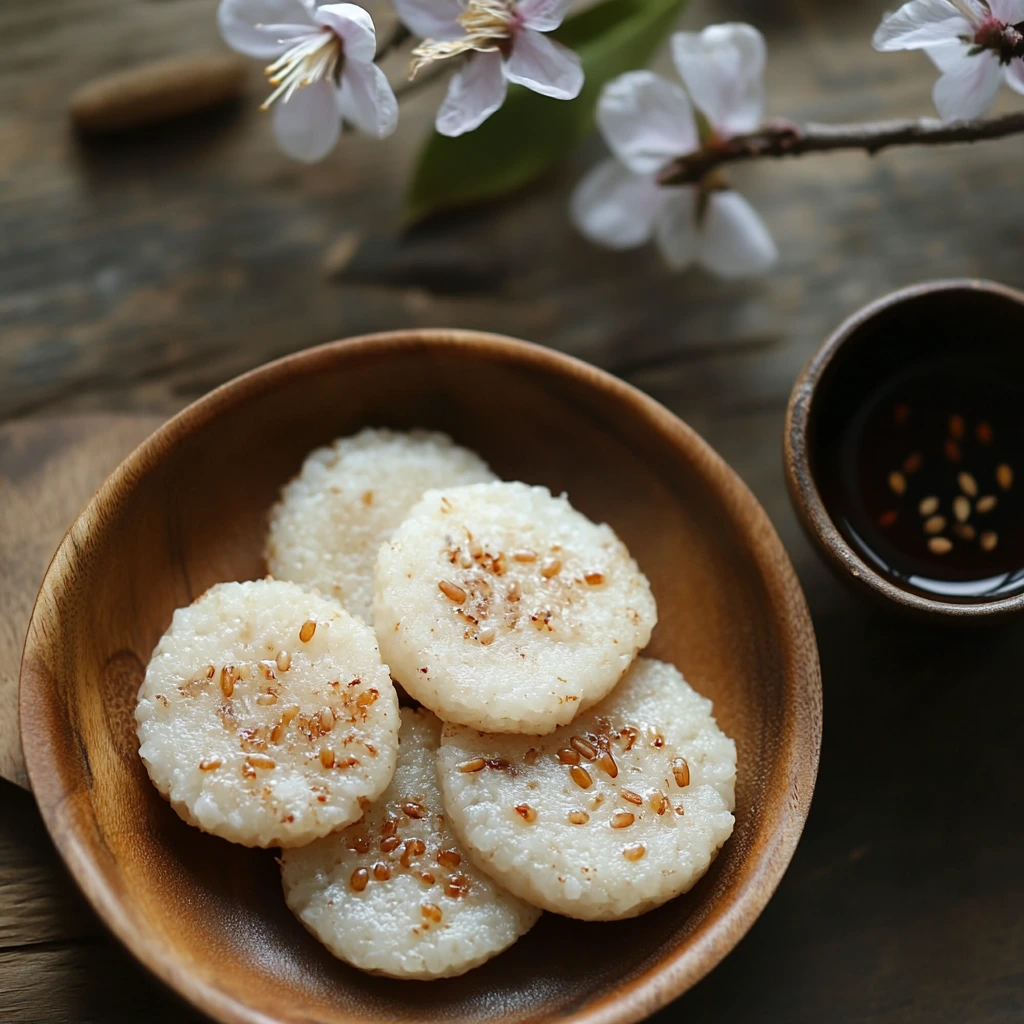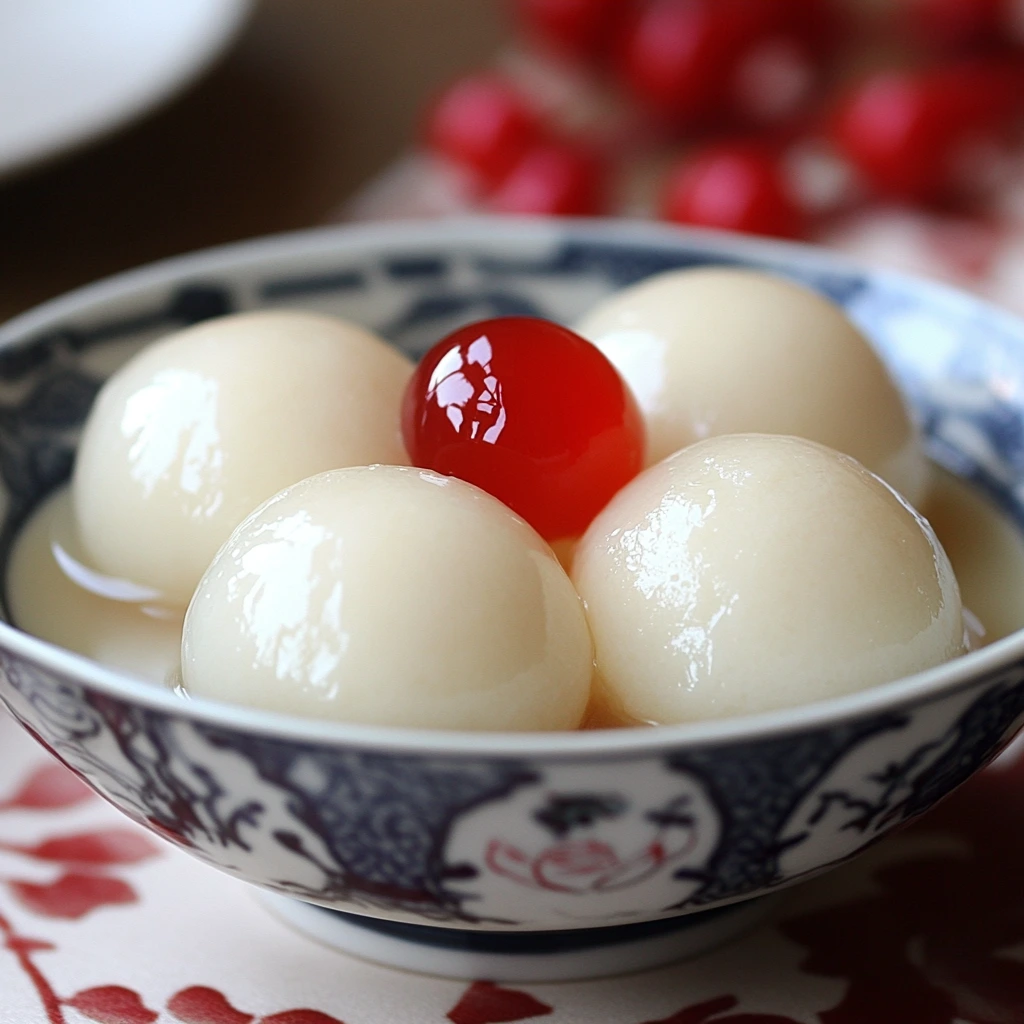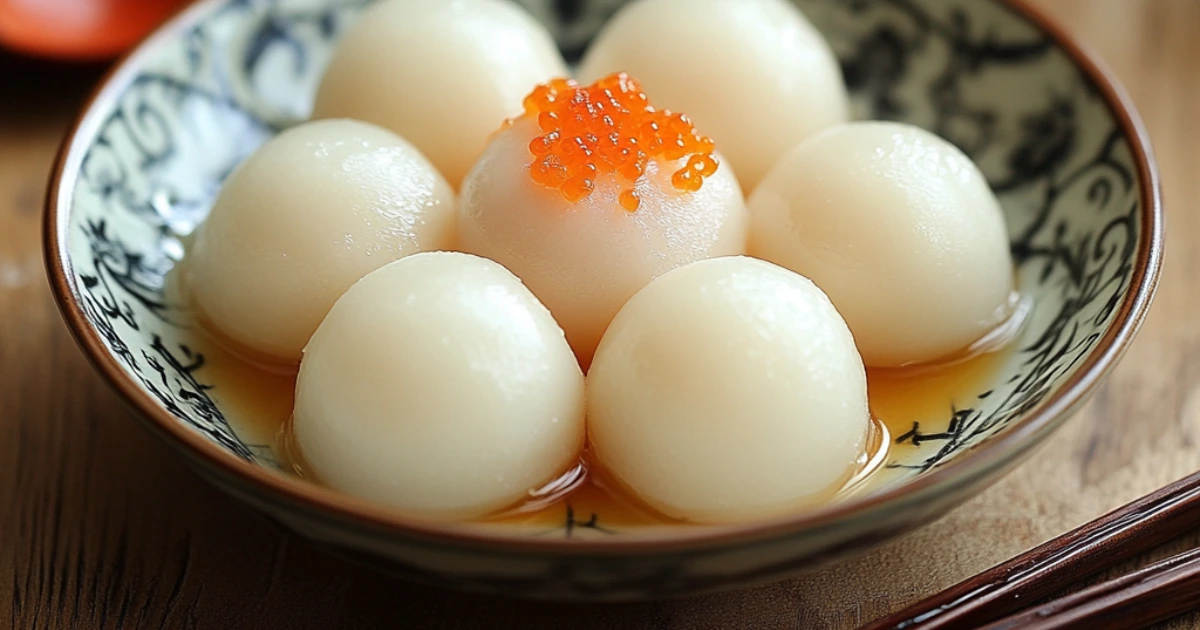Introduction to Chinese Desserts
Chinese desserts hold a unique place in the culinary traditions of the country, offering a delightful balance of taste and texture. Understanding what are common Chinese desserts requires delving into their cultural and historical significance. Traditionally, desserts are not overly sweet compared to Western counterparts, reflecting a focus on harmony and subtlety in flavor. These treats are often associated with important celebrations and rituals, symbolizing blessings, prosperity, and family unity.
The historical evolution of Chinese desserts is deeply tied to the country’s agricultural practices and culinary innovation. For instance, the introduction of sugarcane during the Tang Dynasty expanded the variety of sweets available. Additionally, regional diversity has led to a rich array of dessert options, each showcasing local ingredients and culinary methods. By examining what are common Chinese desserts, one uncovers a tapestry of flavors steeped in history and tradition.
Table of Contents
Traditional Chinese Desserts
Red Bean Paste Desserts
Red bean paste forms the cornerstone of many traditional Chinese desserts, beloved for its subtly sweet and earthy taste. One popular dish is the red bean bun, a steamed or baked treat filled with smooth red bean paste. Another classic is red bean soup, a warm, comforting dessert often enjoyed during colder months. These dishes illustrate the significance of red beans in answering what are common Chinese desserts. They showcase how simple ingredients can yield profound flavor when prepared thoughtfully.
Sweet Glutinous Rice Balls (Tangyuan)
Tangyuan is a quintessential Chinese dessert, often associated with family reunions and the Lantern Festival. These chewy rice balls, typically filled with black sesame paste, peanuts, or red bean paste, are served in a lightly sweetened soup. The round shape of Tangyuan symbolizes unity and completeness, making it a popular choice for celebrations. Its delicate texture and sweet filling make it a staple when considering what are common Chinese desserts.
Mooncakes
Mooncakes are synonymous with the Mid-Autumn Festival, representing togetherness and lunar worship. These dense pastries come in various fillings, such as lotus seed paste, red bean paste, or salted egg yolk. Their intricate designs often feature auspicious symbols, adding to their cultural significance. When discussing what are common Chinese desserts, mooncakes stand out for their rich flavors and festive associations.
Regional Variations
Cantonese Desserts: Almond Jelly and Egg Tarts
Cantonese cuisine is celebrated for its exquisite desserts, including almond jelly and egg tarts. Almond jelly, made from almond milk and gelatin, offers a light and refreshing finish to a meal. Egg tarts, with their flaky crusts and creamy custard filling, reflect a fusion of Chinese and Portuguese culinary traditions. Both desserts exemplify what are common Chinese desserts in southern China, showcasing the region’s penchant for delicate textures and subtle flavors.
Sichuan Desserts: Sweet Fermented Rice and Brown Sugar Rice Cakes
Sichuan’s desserts are as distinctive as its famous spicy dishes. Sweet fermented rice, a dessert soup made from fermented glutinous rice, has a tangy-sweet flavor profile. Brown sugar rice cakes, known for their chewy texture and caramel-like sweetness, are another local favorite. These desserts highlight the regional diversity when exploring what are common Chinese desserts.
Northern China: Sesame Seed Balls (Jian Dui)
Jian Dui, or sesame seed balls, are a popular dessert in northern China. These deep-fried treats are made from glutinous rice flour and filled with red bean paste or lotus seed paste. The crispy exterior and chewy interior make them a delightful snack. As one investigates what are common Chinese desserts, Jian Dui offers a glimpse into the culinary traditions of northern China.
Ingredients Commonly Used in Chinese Desserts
Glutinous Rice, Red Beans, and Mung Beans
Glutinous rice serves as the backbone of many Chinese desserts, offering a chewy texture that is both satisfying and versatile. Red beans and mung beans, often cooked into pastes or soups, provide a natural sweetness that complements other ingredients. These staples are indispensable when identifying what are common Chinese desserts.
Lotus Seeds, Jujube, and Taro
Lotus seeds and jujube are frequently used in traditional desserts for their subtle sweetness and health benefits. Taro, with its creamy texture, is a common filling in pastries and steamed cakes. These ingredients enrich the variety of flavors available in what are common Chinese desserts.

Diverse Sweeteners like Rock Sugar and Honey
Chinese desserts often rely on natural sweeteners like rock sugar and honey rather than processed sugars. These sweeteners add depth and complexity to dishes such as herbal teas and soups. Their use underscores the nuanced approach to sweetness in what are common Chinese desserts.
Famous Festival Desserts
Desserts for Lunar New Year: Tangyuan
Tangyuan holds special importance during the Lunar New Year, symbolizing unity and prosperity. Families gather to prepare and enjoy these sweet glutinous rice balls together, emphasizing their role in festive traditions. They are an essential component of what are common Chinese desserts for this celebration.

Mid-Autumn Festival: Mooncakes
The Mid-Autumn Festival is incomplete without mooncakes. These pastries are exchanged as gifts, strengthening familial and social bonds. Their intricate designs and rich fillings make them a highlight when discussing what are common Chinese desserts.
Dragon Boat Festival: Zongzi (Sticky Rice Dumplings)
While Zongzi is traditionally a savory dish, sweet versions are also popular, especially in southern China. Filled with red bean paste or jujube, these sticky rice dumplings wrapped in bamboo leaves are a festive treat. Their inclusion showcases the diversity in what are common Chinese desserts tied to specific festivals.
By exploring the cultural roots, regional variations, and festival significance, this article provides a comprehensive look into what are common Chinese desserts. The intricate flavors and textures reflect China’s rich culinary heritage, offering a delicious glimpse into its traditions.
Health Benefits of Chinese Desserts
Natural Ingredients with Minimal Processing
Many traditional Chinese desserts are crafted using natural ingredients that undergo minimal processing, making them a healthier alternative to many Western sweets. Common components like red beans, mung beans, and glutinous rice not only provide essential nutrients but also help maintain balanced energy levels. For example, red bean paste is high in fiber and protein, supporting digestion and overall wellness. When answering the question what are common Chinese desserts, it becomes evident that their wholesome ingredients are integral to their appeal. Additionally, these desserts avoid excessive sugar, relying instead on natural sweeteners such as honey or jujube.
Balance of Flavors in Common Chinese Desserts Promoting Health and Wellness
Chinese desserts emphasize a harmony of flavors, often blending sweetness with subtle savory or earthy notes. This balance aligns with the principles of traditional Chinese medicine, which views food as a source of healing. For instance, sweet glutinous rice balls (Tangyuan) may be served in ginger-infused syrup, combining warmth and sweetness for enhanced digestion. By focusing on such combinations, what are common Chinese desserts becomes a question tied closely to promoting health and wellness.
Modern Twists on Common Chinese Desserts
Ice Cream Versions of Traditional Chinese Desserts
Modern interpretations of Chinese desserts often incorporate ice cream, bringing a refreshing twist to time-honored recipes. Popular examples include red bean ice cream or matcha-flavored variations of traditional treats. These adaptations retain the essence of traditional ingredients while appealing to contemporary palates. When considering what are common Chinese desserts, these innovative takes demonstrate how tradition meets modern preferences.
Western Fusion with Traditional Chinese Dessert Flavors
Fusion desserts combining Western techniques with Chinese flavors are gaining popularity. Mooncake-inspired pastries or custard-filled buns exemplify this trend. For example:
- Cheesecakes infused with matcha or taro.
- Cupcakes decorated with lotus seed paste.
These hybrids illustrate the versatility of Chinese dessert elements, making what are common chinesse desserts a global discussion. They appeal to diverse audiences while preserving cultural authenticity.
How to Make Popular Chinese Desserts at Home
Step-by-Step Guide for Making Tangyuan
Tangyuan, or sweet glutinous rice balls, is a staple dessert that symbolizes family togetherness. To prepare them at home:
- Mix glutinous rice flour with water to form a dough.
- Divide and fill each ball with sesame paste or red bean paste.
- Boil the balls until they float, then serve in a ginger-syrup broth.
This simple recipe answers what are Chinese desserts while allowing families to connect through cooking.
Simplified Recipe for Mooncakes
Homemade mooncakes can be easier than they seem. Here’s a straightforward version:
- Prepare a dough using flour, syrup, and oil.
- Wrap the dough around a filling like lotus seed paste or red bean paste.
- Press into a mooncake mold and bake until golden brown.
These recipes highlight how what are common Chinese desserts can be recreated with accessible ingredients and methods.
Street Food and Snacks
Popular Street-Style Desserts Like Sugar-Coated Fruits
Street vendors across China provide an array of vibrant dessert options, with sugar-coated hawthorn berries standing out as a favorite. These candied fruits, known as Tanghulu, offer a delightful combination of crunch and sweetness in every bite. Furthermore, such snacks exemplify what are common Chinese desserts frequently found on bustling streets. For readers interested in exploring regional favorites, be sure to check out the Link to Popular Desserts in Asia for readers curious about regional favorites..
Fried Milk and Other Innovative Offerings
Fried milk, a creamy dessert encased in a crispy shell, showcases the ingenuity of Chinese street food. Its contrasting textures and mild sweetness make it a favorite. These street-style offerings provide insight into what are common Chinese desserts enjoyed casually.
Chinese Dessert Etiquette
How Desserts Are Served and Enjoyed in Chinese Culture
In Chinese dining culture, desserts are typically served at the end of meals or during special occasions. They are often paired with tea, which complements their flavors and aids digestion. Knowing what are common Chinese desserts includes understanding their role in traditional meals.
Pairing Tea with Desserts
Pairing tea with desserts enhances the overall experience. For example:
- Green tea pairs well with sesame-based desserts.
- Oolong tea complements the richness of mooncakes.
This pairing reflects the thoughtfulness in what are common Chinese desserts traditions.
Differences Between Chinese and Western Desserts
Focus on Natural Sweetness and Texture Contrasts
Chinese desserts prioritize natural sweetness and texture, offering a unique sensory experience. For example, the chewiness of glutinous rice contrasts with creamy fillings like taro. When examining what are common Chinese desserts, their subtle flavors set them apart from Western counterparts, which often emphasize bold sweetness.
Comparison of Serving Styles
Unlike Western desserts that may be standalone items, Chinese desserts often complement the meal or serve as symbolic offerings. This difference underscores how what are common Chinese desserts are deeply tied to cultural practices.
Global Influence of Chinese Desserts
Growing Popularity of Chinese Sweets Worldwide
Chinese desserts are gaining widespread popularity worldwide, with dim sum restaurants and specialty bakeries featuring iconic treats like egg tarts and red bean pastries. This global expansion highlights how what are common Chinese desserts continue to resonate far beyond their cultural origins, appealing to diverse palates and traditions.
Restaurants and Bakeries Specializing in Chinese Desserts
From bubble tea shops to dessert cafes, establishments specializing in Chinese sweets are thriving. Their offerings cater to those seeking authentic flavors, further spreading awareness of what are common Chinese desserts globally.
Frequently Asked Questions
What Are Common Chinese Desserts?
What are common Chinese desserts? These include an array of delightful treats such as Tangyuan, mooncakes, and red bean buns. Each of these desserts emphasizes the use of natural ingredients, showcases deep cultural significance, and offers unique textures that make them stand out as beloved staples in Chinese cuisine.
Where Can I Buy Authentic Chinese Desserts?
Authentic Chinese desserts can be found in specialty bakeries, Asian grocery stores, and dim sum restaurants. Many online retailers also offer traditional Chinese sweets.
What Ingredients Are Common in Chinese Desserts?
Ingredients like glutinous rice, red beans, mung beans, lotus seeds, and jujube are staples in Chinese desserts. These provide the distinct textures and flavors associated with traditional recipes.
Conclusion
In conclusion, by exploring what are common Chinese desserts, one can uncover a rich tapestry of flavors, traditions, and innovations. Whether it is traditional delicacies or modern twists, these desserts provide something for everyone. Moreover, they effectively highlight the enduring appeal of Chinese culinary heritage.

